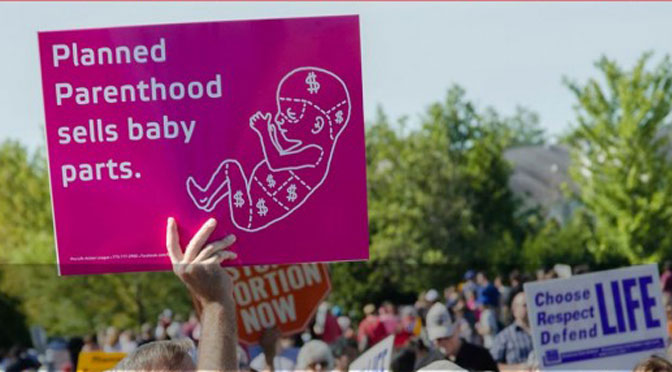Currently up for debate is whether Planned Parenthood should continue to receive federal funding, or if that funding (over $500 million annually) should be redirected to community health centers. Here are five answers to common questions:
1. Why do you want to take away funding from Planned Parenthood?
Planned Parenthood engages in one of the biggest human rights injustices on the books: abortion. As the largest abortion chain in the United States, Planned Parenthood commits over 320,000 abortions every year — one every 97 seconds. In addition, the corporation has been exposed for serious abuses, such as covering up statutory rape and sex-trafficking, lobbying for infanticide, expressing a willingness to commit abortions based on race and sex, and promoting risky sexual behavior to kids.
As taxpayers, Americans want a say in how our money is used. Today, most are increasingly in support of protections for the preborn, and a majority of Americans don’t support the forced taxpayer funding of abortion. The current proposal before Congress doesn’t take funding away from women’s health care — it provides women with even greater access to comprehensive care. Redirecting funding away from Planned Parenthood towards Federally Qualified Health Centers (FQHCs), which outnumber Planned Parenthood 20 to 1, gives women more access to centers that provide a significantly wider range of services.
2. Why redirect funds to FQHCs?
Federally Qualified Health Centers provide even more services than Planned Parenthood, and are required to serve underserved populations with comprehensive care. It’s true that we need to ensure FQHCs are able to take on even more patients, but FQHCs are already used to seeing a large number of patients – about 22 million patients a year – whereas Planned Parenthood sees about 2.5 million.
3. Still, won’t this significantly decrease women’s access to health care?
No. Planned Parenthood provides a relatively insignificant percentage of overall health services in America (think only 2 percent of all U.S. pap tests). They mislead the public about their health care services and downplay abortion. Planned Parenthood’s number of abortions has been increasing, while pap tests, breast exams, and STD tests have been decreasing. So while their marketing tells you otherwise, relatively few Americans depend on Planned Parenthood.
The Guttmacher Institute reports that there are about 67 million women of reproductive age in America. Planned Parenthood claims that it sees about 2.5 million patients each year, which includes both men and women.
Planned Parenthood has also been involved in significant Medicaid fraud. Page 311 of this recent report — as well as a this recent release of audits —confirm that Planned Parenthood has abused the system by over-billing over $12 million. FQHCs are specifically meant to serve underserved populations, and can take on the patients Planned Parenthood sees every year.
4. If Planned Parenthood facilities have to close, won’t women resort to dangerous back-alley abortions?
This is a common misconception, and there is no evidence to back this claim. We also need to be clear that the prevalence of so-called “back alley” abortions, as well as injuries and deaths associated with them, were grossly exaggerated before Roe v. Wade.
Dr. Bernard Nathanson, co-founder of the National Abortion and Reproductive Rights Action League (NARAL), said:
“We aroused enough sympathy to sell our program of permissive abortion by fabricating the number of illegal abortions done annually in the U.S. The actual figure was approaching 100,000, but the figure we gave to the media repeatedly was 1,000,000. Repeating the big lie often enough convinces the public. The number of women dying from illegal abortions was around 200 – 250 annually. The figure constantly fed to the media was 10,000.”
The CDC recorded 65 deaths total from abortion the year before Roe v. Wade, and life-affirming medical providers, such as Guiding Star Centers and Obria, didn’t exist at that time to help women with alternatives to abortion.
5. Doesn’t federal law prevent taxpayers from funding abortions?
While federal law does not permit federal money to be used to for abortions, there are loopholes that ensure abortion is being subsidized. When Planned Parenthood receives over $500 million every year, that frees up money to be used for other parts of its business, such as expanding facilities or purchasing equipment. As Live Action notes on its FAQ page:
Additionally, think of it in these terms: If there was a company that slaughtered puppies to make fur coats, but another part of their business was planting trees to help the environment, would you be comfortable supporting that company with hundreds of millions of your tax dollars, even if they only used that money to plant trees? Of course not. You would look for other companies that plant trees that don’t slaughter puppies.







